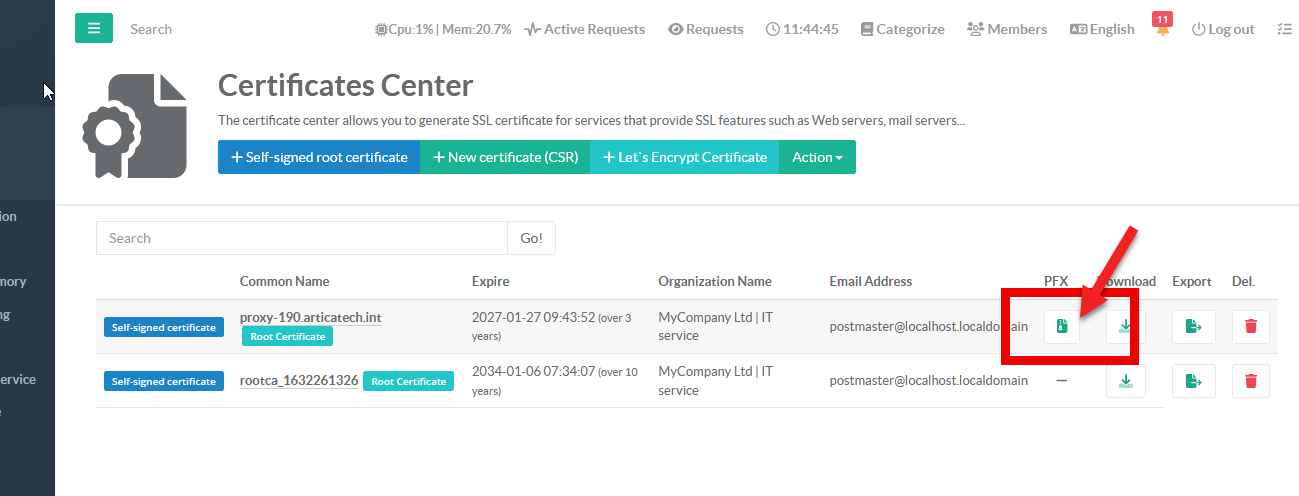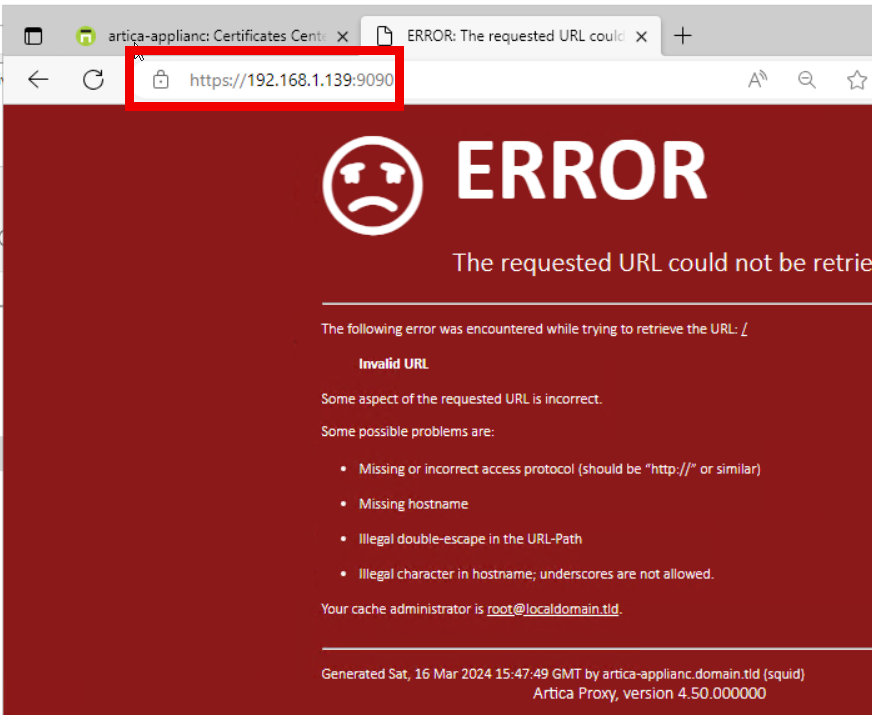If you're using the proxy port with an official server certificate, there's no constraint: the browser will connect to the SSL port and perform its encryption exchange in the traditional way.
If, on the other hand, you have used a self-signed certificate and the root certificate is not in the trusted certificate container, the browser will complain about this behavior. ( NET::ERR_CERT_AUTHORITY_INVALID )
To fix it, you need to import the server certificate inside the Trusted Root Certification Authorities., download the PFX file of the of the root certificate

- To validate browser acceptance of your certificate, try browsing the https address of the proxy port.
You should get a red proxy error

Specifying an HTTPS proxy is generally not possible through system proxy settings.
Instead, one must use either a PAC script or a Chrome proxy setting (command line, extension, or policy).
¶ Using secure proxy with Chrome with command line
A secure web proxy can be specified by using the --proxy-server=https://<proxy>:<port> command line argument.
For example:
"C:\Program Files\Google\Chrome\Application\chrome.exe" --proxy-server=https://secure-proxy.example.com:443
Since the communication between Chrome and the proxy uses SSL, next protocol negotiation will be used.
If the servers supports HTTP/2, then the proxy will act as an HTTP/2 Proxy.
¶ Microsoft Edge, Chrome Opera or Firefox
Most major web browsers do not provide built-in support for setting up a secure (HTTPS) proxy directly through the browser settings.
Typically, proxy settings in browsers are limited to HTTP proxies, with no direct option to specify that the proxy connection itself should be encrypted.
Although directly specifying an HTTPS proxy might not be supported, you can use a PAC file to determine when and how web browsers use a proxy for HTTP, HTTPS, and other URLs.
A PAC file can include logic to direct HTTPS traffic through a proxy server.